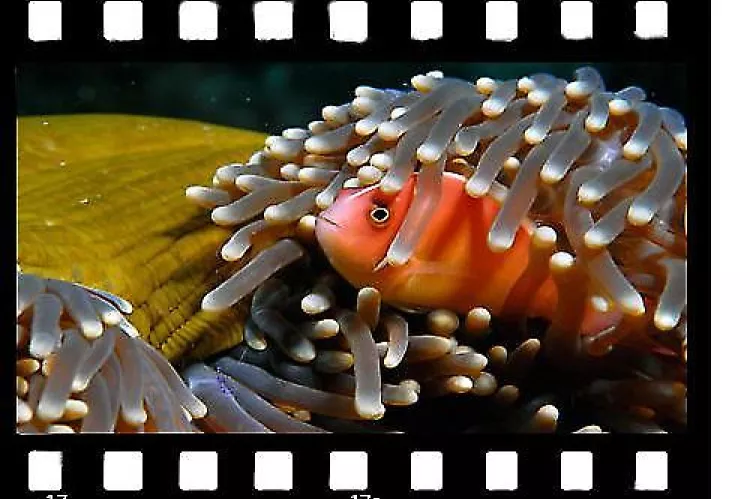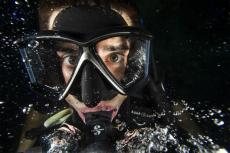Save in the right sizes and formats. Clean and color correct the images. Make a selection. Read more here >>>

No scatches, no dust or excessive amount of backscatter and particles, please. Make sure that digital images or scans are cleaned up.
Fileformats
Psd (Photoshop), jpg, tiff or png formats preferred.
Minimum file sizes required
3000 pixels along the longest axis for feature articles.
2000 pixels along the longest axis for images to be posted on websites and social media.
Resolution
The pixel count mentioned above is what matters. Send only sharp images.
Please send images as 144 dpi, and 300dpi for covers and large formats in the layout.
Clean the images first
Images should be cleaned and colour corrected. Images with dust, scratches, backscatter, compression artefacts or other visible blemished will be rejected. So will images that are out of focus or incorrectly exposed, so check the histograms!
No jpg compression
Do not compress jpgs please, as it leaves compression artefacts.
Save jpgs directly from the original tiff or raw file, as saving and re-saving a jpg repeatedly will cause deterioration of image quality.
Omit copyright notices and watermarks
Please do not superimpose any copyright notices or visible watermarks on the image itself. We will add credit bylines or copyright notices along the side of the image, according to our general design guidelines. When we publish the magazine, the pdf will be copy-protected with a password against image extraction.
Rename your image files
Out of the camera, image files tend to be named according to a standard convention—for example, DSC023044.jpg. Can you see the problem?
- The next contributor in line may also have their files automatically named in the same manner, and then we risk a conflict or overwrite.
- It does not tell us anything, such as who took it or what story it goes with.
Please use the following general file naming convention for images:
- Image number_Location_DiveSite_SpeciesNameAndBehaviour_ByPhotographerName
The file number/name gives sequence and caption information, which helps us place it in the right spot in your text.
List location and/or dive site first in all file names.
Use ‘ByPhotographerName’ to credit the photographer, so we know they are not a person in the photo.
See file name examples below:
- DC1012_Bali_Tulamben_HouseReef_HairyFrogfishGuardingEggsOnNightDive_ByJaneDoe
- DS4043_Dorset_Weymouth_HMSWarriorII_JohnSmithAtPropeller_ByJaneDoe
Note:
Please do not use punctuation or symbols in file names, as they may cause InDesign to crash.
Use folders to group images by photographer, so we know whom to credit.
Place topside photos in a separate folder.
Send a meaningful selection – not a huge load.
No more than 30 images. Browsing through massive file transfers, with hundreds of unsorted images, does not only take a lot of time for the editor, but it should be you who selects the most important images and not the graphic designer, who was not on location, cannot guess which images are most significant, and is, for most part, already maxed out.
If in doubt, make a primary selection of 10-20 images in one folder called 'Primary,' and a secondary selection of no more than 20 additional images in a second folder called 'Secondary.'
Remember captions, credits, usage licenses
Please include meaningful captions with names, locations and descriptions for all photographs. Some photographs of people require a signed release from the subject. Each image that you did not create yourself needs an image credit, usage permission or usage license (i.e. Creative Commons).
File Transfer
See: How to submit














